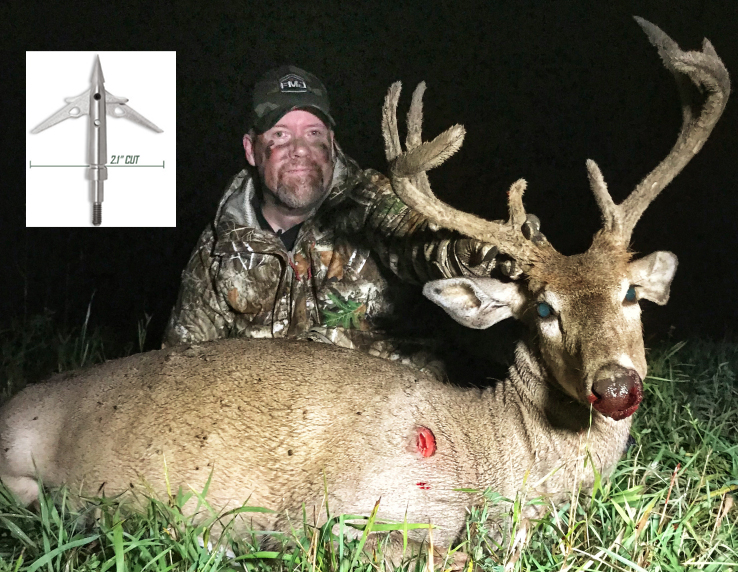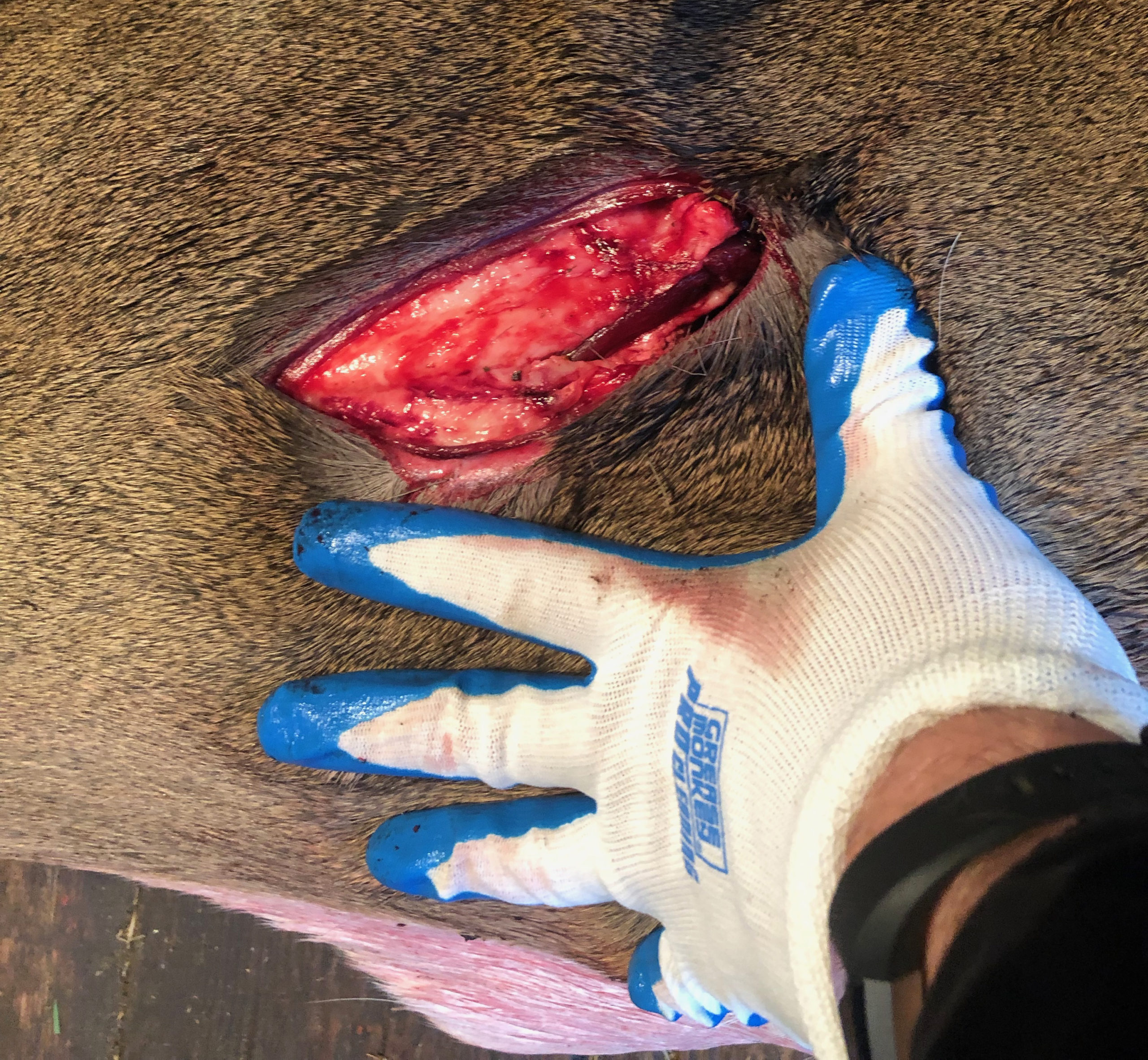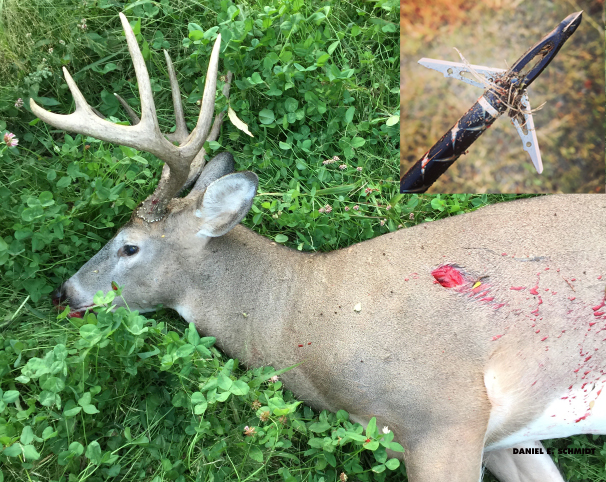Even the best mechanical broadheads aren’t much for a deer hunter if he or she doesn’t make a perfect shot on a deer. To get great bloodtrails, you need to combine form, function and the ultimate in shot placement.
(Updated March 13, 2020)

It doesn’t matter if I’m hunting with a crossbow or compound bow, these days I’m shooting the best mechanical broadheads I can find almost exclusively while hunting deer. It took nearly 20 years of stubborn old-school ways for me to make the switch, but these hole-happy broadheads are definitely worth the wait.
Before any further discussion on broadheads, I will be 100% upfront and let you all know that all of these companies listed here do business with Deer & Deer Hunting. However, I’m going to be perfectly honest in my assessment of each and every product listed in this blog. I simply will not speak highly of any product that I do not believe in. That’s not how I roll.
What’s more, I will tell anyone who asks that I’m a hodgepodge kind of deer hunter. On any given day in the woods, I might be wearing Realtree pants and a Mossy Oak jacket. Check my quiver, my ammo bag — etc — at any time of the year, and you’ll see that I use a wide variety of products when I go deer hunting. If D&DH fans know anything about me, they know I’m about putting deer down (and lots of them) as quickly and humanely as possible. I’m going to use what works. Period.
OK, enough on that. Here’s a look at the best mechanical broadheads that I’ve shot while hunting with my compound bows and crossbows deer these past three deer seasons.

www.sevrbroadheads.com Style: For compounds and crossbows. Grains: 100 and 125. Cutting diameter: 1.5, 1.7, and 2.1-inch versions. Tip: Chisel tip. Blades: .032-inch stainless steel. Retail: Sold by unit, direct from the manufacturer. Prices vary from $11.99 to $13.99 per broadhead. Free shipping on orders over $49.
PROS: SEVR Broadheads burst onto the archery scene in 2018, but they’ve already redefined how broadheads are made and sold in North America. I’ve been using them since the first prototypes were available to some of us in the hunting industry. Thus far, I’ve shot over a dozen whitetails and a half dozen turkeys with them. They are every bit as good as advertised. The broadheads are made from high-quality materials; they’re scary sharp; they cut huge holes; they’re sold individually; and you can practice with them. There are also three models to choose from. The SEVR Titanium 2.1 is my go-to head from this group. It’s not like it is really that much superior to the 1.5 to 1.7, but it does slice a bigger wound. I’ve had some absolutely insane entry and exit holes on deer thanks to the Stretch Cut® effect. What happens here is on angling shots, the broadhead pretty much hyperextends and cuts a bigger hole by stretching the hide on impact. I’ve had entry holes on deer that I could literally stick my entire hand into. Gruesome but awfully efficient.
CONS: There is a slight learning curve to find out which one is right for you. I guess that’s a “con,” but at the same time you’re not pigeon-holed into just one model. SEVR essentially make three different broadheads that start at 1.5-inch cut and increase up to the max of 2.1-inch cut. Which one is right for you? Really depends on how you hunt. If you shoot a lower poundage compound, I would recommend the 1.5 or 1.7. If you shoot a super fast compound or crossbow, I’d recommend starting with those same two. Anything else, I’d definitely start with the 2.1. It is an absolute smoker of a broadhead (and I say that with all due respect to the animal).

www.ragebroadheads.com Style: For compounds and crossbows. Grains: 100. Cutting diameter: 2 inches. Tip: Hybrid Hypodermic tip. Blades: .039-inch stainless steel. Retail: $54.99 for three broadheads
PROS: I found Rage’s Hypodermic Trypan 2-blade to be one of the best mechanical broadheads they’ve ever made. It is as impressive as the Rage X-treme. The new broadhead, however, has some nice features, including super-swept-back blades and a grooved retention collar that’s pretty much idiot-proof. If you’ve followed my bowhunting adventures over the years, you’ll note that the Rage Titanium was the first mechanical that I ever truly trusted to be shaving-sharp out of the package. The same holds true here, but the Trypan is an on-steroids version of those earlier styles. The best attribute of this new head is its slap-cut. I’ve shot three animals with it, and the entry wounds have ranged from 3.5 inches to darn-near 5 inches. What happens is when the animal is at a quartering position, the broadhead slices a wider entry wound by “catching” and slicing the hide open as the ferrule penetrates. Nearly every mechanical broadhead on the market produces a slap-cut to some extent, but the Trypan is among the most impressive I’ve seen.
CONS: There’s not much to criticize here, but the Trypan, like most wide-cutting mechanicals, does require some tuning from both compounds and crossbows. A solution that worked for me before my first hunt was to use Rage X-treme practice points. They flew nearly identical to the real-life Trypans. After that, I retrieved a spent Trypan and Super-Glued® the dull blades into the ferrule. This “practice point” lasted for most of the early bow season.

www.NewArchery.com Style: For compounds and crossbows. Grains: 100. Cutting diameter: 2 inches. Tip: Cut-on-contact tip. Blades: .039-inch stainless steel. Pack of three costs $44.99.
PROS: One of the best mechanical broadheads NAP has ever produced. It’s built like a tank (both regular and crossbow versions), and relies on NAP’s ingenious Spring Clip retention system to keep the blades closed in flight — no bands or sleeves necessary. The KillZone® produces insanely wide slap-cut entry wounds that can be almost twice as wide as the advertised 2-inch cutting diameter, depending upon the angle of the deer when the broadhead hits it mark. Superb quality control on blade sharpness, and the rugged construction has allowed me to re-use heads more than once. I would advise to never re-use a bent broadhead, but if shots are clean, a quick touch up on the blades with a Smith’s sharpener is possible. The crossbow version is designed for use out of rigs that shoot up to 400 feet per second.
CONS: As is the case with the Trypan, the Shockwave receives very little criticism. We’re talking about the top-end engineering with these broadhead designs. Again, this head might require some fine-tuning at the practice range. NAP makes it easy by offering a dedicated practice head that’s included in each pack of broadheads. They are also sold separately for about $9 apiece. A very good investment for the bowhunter who is brand-loyal and expects to shoot the same style of broadhead in future years.

www.truglo.com
Style: For compounds and crossbows. Grains: 100. Cutting diameter: 1-3/4 inches. Tip: TruCut one-piece titanium tip. Blades: .031-inch stainless steel. Pack of three costs $44.99.
PROS: A wicked mechanical that truly eats up a deer’s vitals and produces massive bloodtrails. I’ve shot several deer, hogs and even a turkey with these broadheads. The difference with this head (I’ve used both the 2-blade and 4-blade configurations) is that its titanium tip is perhaps the best design of this new wave of heads to hit the market this year. The Titanium X itself is a spin-tested broadhead that flies like a field point, and its blades are scary sharp. The 4-blade model produces insane wound channels. A mature doe I shot in Wyoming provided my lone sample so far of what they will do on quartering-away shots. The head penetrated just above the deer’s right scapula and blew through the chest cavity with no trouble. The deer ran about 75 yards before collapsing. There was no need to look for a bloodtrail because I saw the deer go down, but the bloodtrail was there and was quite spectacular.
CONS: You do have to be careful when placing these in a traditional foam-style quiver, because the blades are somewhat exposed and will cut you if you’re not paying attention.
Again, this is just my one man’s opinion on the mechanical broadheads that I’ve shot these past three deer seasons. I know there are many others out there that are impressive. Many D&DH readers have contacted us and shared these experiences. I’d like to hear from you! Click this LINK to go to our Facebook post, and share your comments and photos!











































